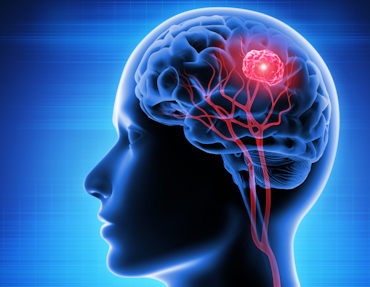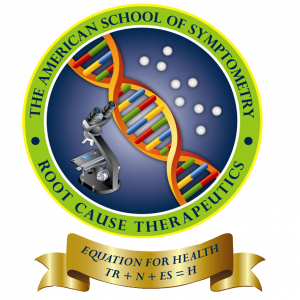
Dr. Maxwell Nartey
Professor of Symptometric Science, American School of Symptometry, NFP
A tumor is an anomaly that begins and grows in cells with weak microtubules. Variants such as mass, hemangioma, nodule, lump, carcinoid, growth, sarcoids, fibroids, glioblastoma, meningioma, pituitary tumors, choroid plexus tumors, medulloblastoma, etc., do not diminish the fact that the microtubules in the cells where the tumor started and grew were weak.
Therefore, a tumor is a tumor, and when the conditions are right, it can grow in any organ, vessel, duct, tube, tubule, gland, or bone. There is nothing special about a brain tumor, breast tumor, pancreatic tumor, tongue tumor, esophageal tumor, etc., because where the tumor grows is irrelevant.
The good news is that every tumor is preventable. How does one prevent a tumor? By cooking, eating, and living scientifically, Symptometry-style, which means knowing where the tumorigens are and avoiding them.
In my next article on tumors, I will share the names of the plants, bacteria, and viruses that cause tumors even in babies before they are born.
Growth of tumors
Tumors will grow if they have what they need to keep growing. What they need to grow is fructose, nothing else.
Sources of fructose
- Chocolate because it contains sucrose
- Chewing gum
- Ice cream because it contains sucrose
- Date sugar. It should be avoided at all costs because of its large amount of fructose
- Demerara
- Table sugar
- Sugar cane
- Juices
- Jellies
- Jams
- Candy
- Sugary desserts
- Sugar beet
- Cakes
- Blackstrap molasses
- Confectioner’s sugar
- Muscovado
- Rice syrup
- Maltodextrin
- Sucanat
- Isomalt
- Jaggery
- Barley malt syrup
- Dextrin. It is extracted from sorghum, barley, wheat, potato, corn, arrowroot, brown rice, white rice, and tapioca.
- Seaweed, with mannitol extracted from seaweed
- Commercially-made cookies
- Frosty creams
- Glazes, as in glazed doughnuts
- Jell-O
- Milkshakes
- Protein bars
- Protein drinks
- Energy drinks
- Agave nectar
- Honey
- Maple syrup
- Corn syrup
- High fructose corn syrup
- High maltose corn syrup
- Invert sugar
- Turbinado sugar
- All fruits, including fruity vegetables that can be cooked, such as plantain
- Mannose. Hospitals use it to treat urinary tract infections.
- All vegetables, including edible leaves, root crops, tubers
- Grass on which herbivores feed, making all herbivores sources of glucose and fructose. Therefore, herbivores such as Buffaloes (bison) and cattle (beef) do not only have protein. They also have fructose.
- Non-edible leaves on which defoliators feed, making all defoliators sources of glucose and fructose.
- Starch
- Maltose
- Lactose
- Sucrose
- Sugary water, such as Agave nectar or honey, mixed with water
Fungating tumor
A fungating tumor grows until it ruptures the skin, causing an ulcer. This often happens in the breast. What allows the tumor to grow? The answer is fructose.
What is recommended to stop a tumor from growing or to shrink a tumor? Symptometry recommends consuming only 2 of the 51 sources of fructose: starch and scientifically prepared and cooked approved vegetables.
Self-discipline is required to stick to only two sources of fructose while following the Symptometry cell self-correction and self-regulation method.
The downside of chemotherapy
Every chemotherapy drug has alkyl, and alkyl zaps hydrogen from the person, causing weakness, severe fatigue, organ malfunction, lethargy, and dehydration due to the breakdown of the osmosis mechanism.
Can cells produce enzymes without water? No. This explains why the cells of a person undergoing chemotherapy can’t produce enzymes, and a person who can’t produce all the 20 digestive enzymes and thousands of ancillary enzymes will not be around for too long.
Hydrogen infusion therapy
Since alkyl in all chemotherapy drugs robs the body of hydrogen, causing a severe hydrogen deficit, hydrogen infusion therapy is used to get hydrogen back into the person. Why remove hydrogen in the first place? This therapy has successfully eliminated cancer cells but at a hefty price.
The downside of this treatment is that it does not allow the replacement cells to divide rhythmically, causing the tumor to reappear a few months or years later. In other words, this allopathic treatment does not stop cell neglect, which is unfortunate.
Why is the cancer death rate so high?
Alkyl is the problem, and all chemotherapy drugs contain alkyl. Alkyl removes hydrogen, shortening a person’s life expectancy or lowering their quality of life.
Cancer surgery
If the tumor can be surgically removed, it will end the pressure that the tumor has been exerting on the adjacent nerves to cause pain or headaches. Unfortunately, many tumors are inoperable.
Immunotherapy and radiation therapy
Immunotherapy involves providing the immune system with substances to destroy cancer cells or flatten the tumor, while radiation therapy uses radioactive ions to do the same. Here are Symptometry’s questions.
Is cell division still possible if radioactive isotopes keep denaturing kinase and cyclin, which divide cells, and helicase, which unwinds DNA? The emphatic answer is no.
If the replacement cells can’t divide, and the DNA in them can’t unwind, it is obvious that the tumor will regrow or the cancer will return.
The Symptometry method
The Symptometry method is simple. It involves a) knowing the sources of tumorigens and carcinogens and avoiding them, b) following the pH rule, and c) using ionization or electrolytic dissociation to ensure plasma membrane permeability so carefully selected nutrients and resources can enter the replacement cells.
Once carefully selected nutrients and resources are in the replacement cells, cell self-correction, self-regulation, and self-perpetuation will resume automatically, ending cell neglect and making the person healthy.
A person who restores their health cannot go back and live chaotically. They must kiss their chaotic lifestyle full of ignorance goodbye because they have turned the page and started a new chapter in a new and better paradigm.
Proof that fructose grows tumors
People who, on Symptometry’s recommendation, a) avoided meat and garlic and cooked with onions but did not eat them, b) used the cell self-correction and self-regulation method, and c) ate scientifically cooked vegetables and some starchy foods for six months succeeded in shrinking the tumors in their bodies. Why?
They avoided the tumorigens and consumed only 2 of the 51 sources of fructose. This is proof that fructose grows tumors, and avoiding them shrinks tumors.
Malignancy
Malignancy should not be a cause for concern because resolving the fructose problem, avoiding tumorigens, and fortifying the cells automatically allow the cells to self-correct, self-regulate, and self-perpetuate in the right fashion.
The idea that a tumor can kill a person remains debatable at best because it has never happened. It is heart and respiratory failure that kills every human being.
All a tumor does is exert pressure on the adjacent nerves to cause pain or block electrical signals from being transmitted or received. Other than that, tumors do not threaten lives. Expect the publication of part 2 soon.
© Copyright 2024, The American School of Symptometry, NFP. No part of this publication may be reproduced or transmitted in any form or by any means, electronic or mechanical, including photocopying, recording, or by any information storage and retrieval system without the written permission of The American School of Symptometry, NFP. Library of Congress copyright number Txu 1-621-370, Washington D.C.


 Previous Post
Previous Post Next Post
Next Post